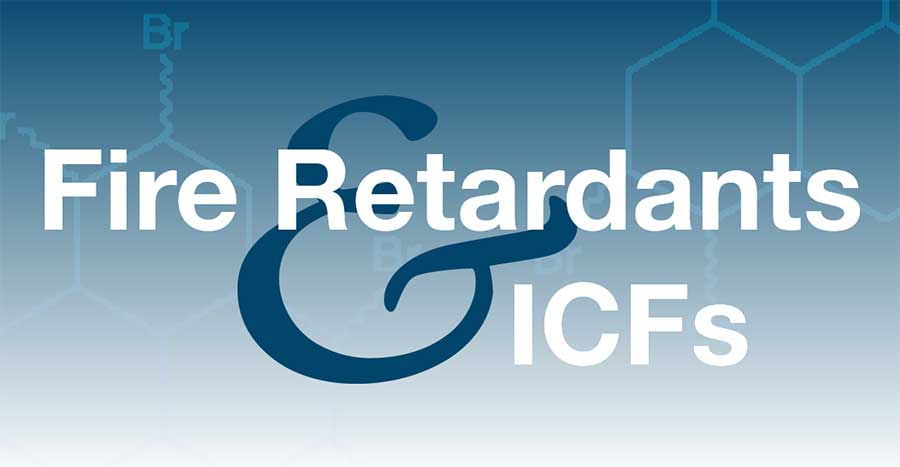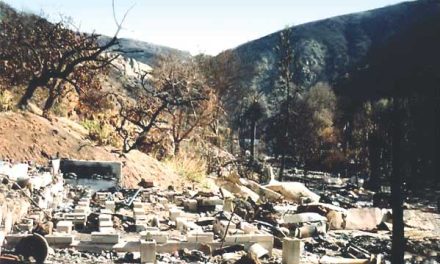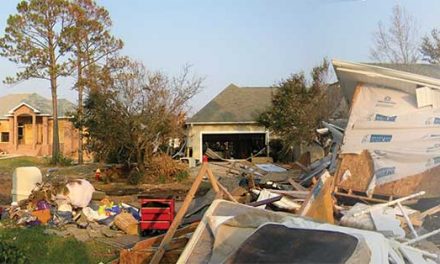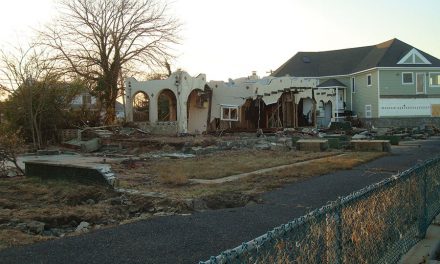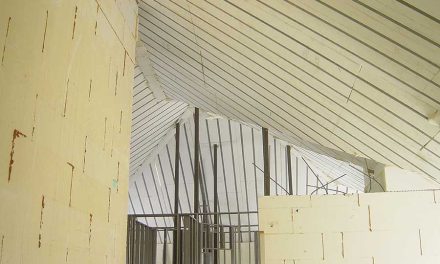ICF construction has been promoted as one of the safest, most-fire-resistant types of construction. That’s because ICFs have a reinforced concrete core sandwiched between two fire-resistant foam panels. Steel-reinforced concrete, which is absolutely fireproof and does not deform or soften regardless of heat, provides 100% of the structural bearing loads for ICFs walls.
The Expanded Polystyrene foam (EPS), which used as the stay-in-place forming system and provides insulation when the wall is complete, has been treated with a flame-retardant additive to make it virtually fireproof, too. When exposed to heat the foam will melt away, but it cannot sustain a burn by itself, and it does not add fuel to the fire.
Raw, untreated EPS has approximately the same flammability as diesel fuel. But treated with a specific fire-resistant additive, and it becomes extremely fire resistant. It will limit flame spread to 20% of the area of wood. Additionally, the emissions from the melting foam are “no more toxic” than those of wood, according to lab analyses.
The chemical that gives EPS foam these unique characteristics is a brominated flame retardant called Hexa-bromo-cyclo-dodecane or HBCD. In fact, of the 40,000 metric tons of HBCD produced annually, 85% is used to treat XPS and EPS foam used in the building industry.
According to the Bromine Science and Environmental Forum (BSEF), the international association that represents HBCD manufacturers, the chemical is very effective and very safe. They state, “HBCD is highly efficient in this application so that only very low levels are required to reach the desired flame retardancy. Typical HBCD levels in EPS are 0.7% and in XPS 2.5%. At present, HBCD is the only suitable flame retardant for these applications.”
Others disagree with claims of the chemical’s safety, and point out that HBCD is a persistent bioaccumulative toxicant (PBT). In other words, it’s a poison that builds up in the body over time, and the human body has no method of removing it. When levels reach a certain point, serious health concerns will develop.
Both the U.S. Environmental Protection Agency and the European Chemicals Agency have confirmed that HBCD persists in the environment and does not break down into safer chemicals. According to EPA’s HBCD Action Plan released last year, “It also presents potential human health concerns based on animal test results indicating potential reproductive, developmental and neurological effects.”
Bill Walsh, executive director of the Healthy Building Network, went to a conference on brominated flame retardants earlier this summer, and reports that thirty scientific papers were presented, all of which linked HBCD to various health problems.
Arlene Blum, a leading expert on the health risks presented by flame retardants, summarizes, “HBCD is clearly a bad actor chemical, and there is now enough evidence that it’s hazardous to both human health and the environment that European agencies are moving to restrict its use.”
In February of this year, the European Union announced that it is banning the production and use of HBCD. Immediate phase-out is encouraged, and the ban will be fully implemented by mid-2015.
Outlawed in North America?
This decision will have a far-reaching impact on the ICF industry. Alex Wilson, founder of BuildingGreen, LLC and Environmental Building News says, “In an increasingly global manufacturing industry, [this chemical ban] will cascade throughout not only Europe, but also North America.”
Blum concurs, “The EU ban should contribute to its being phased out in the U.S.”
California has already begun moving toward phase out. The state Department for Toxic Controls has listed HBCD as a chemical of concern. In response to the California decision, The EPS Molders Association (EPSMA) has joined the coalition fighting the changes, but substantive changes are unlikely. According to Betsy Steiner, executive director of EPSMA, “the coalition strategy is to slow the movement of the proposed regulation.”
ICFs Still Sustainable
So where does this leave ICF molders and installers? First, insulated concrete forms remain an extremely sustainable building material.
The EPA has traced most of the HBCD in the environment to emissions that escape during manufacturing, not after application. That confirms a 2008 finding by the European Chemicals Agency that when HBCD is used in insulation, the predicted exposure is “very low.”
Builders, distributors and installers should have no reservations about telling green-conscious homebuyers they’re getting one of the most sustainable building products on the market.
A Better Alternative
BSEF, the flame retardant council, insists that “HBCD has currently no technically and commercially feasible alternative for EPS and XPS applications despite intensive research.”
That statement may no longer be accurate. Earlier this summer, Dow Chemical announced they had developed a new, polymeric flame retardant (Polymeric FR).
Erik van Oosten, a Dow media representative, says “Polymeric FR is expected to be the ‘next generation industry standard’ flame retardant for use in both extruded polystyrene (XPS) and expanded polystyrene (EPS) foam insulation applications globally. The development of the new Polymeric FR is the result of Dow’s continuing search for more sustainable products, specifically, an effective and sustainable flame retardant that can replace hexa-bromo-cyclo-dodecane.”
Dow characterizes Polymeric FR as a stable, high molecular weight,
Non-PBT (persistent bioaccumulative toxin) substance that has been subjected to an “extensive and robust Environment, Health & Safety (EH&S) testing regimen and evaluation,” which reportedly confirms it to be far more environmentally friendly than HBCD.
Steiner, the EPSMA director, reports that the new chemical has been tested extensively in both EPS and XPS foam products to verify that the flame resistance, strength, and thermal properties are similar to those of HBCD-treated foams.
Dow has licensed a single company, Chemtura, to produce the new chemical; additional licenses are expected to be granted in the coming months. “This will be followed,” Van Oosten says, “by large plant construction by the licensees, making significantly larger commercial volumes available by 2013-2015. This should allow the global polystyrene foam insulation industry to make a smooth transition.”
EPSMA spoke with a Chemtura representative, Steve Scherrer, who noted that the transition from HBCD will likely take several years, and that HBCD can be used in the interim.
He also pointed out that the new polymeric flame retardant is a viable alternative to HBCD in the one-step EPS resin production process but is not conducive to the two-step process, due to its insolubility and incompatibility with commonly used blowing agents.
The Next Step
In April, the EPA formally began the process of finding alternatives to HBCD. Managed by the EPA’s Design for the Environment (DfE), dozens of stakeholders met to discuss the importance of flame-resistant EPS and alternatives to HBCD. While no one from the ICF industry took part, Betsy Steiner attended in her role as executive director of EPSMA.
The program, formally titled Partnership on Flame Retardant Alternatives to HBCD, is expected to finish their research and recommendations within a few months and release a draft report available for review and comment by October. A final report is scheduled for release in January 2012.

